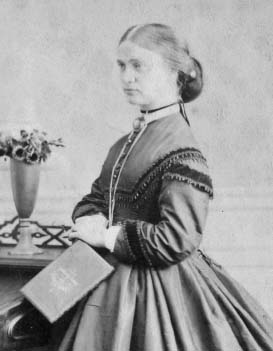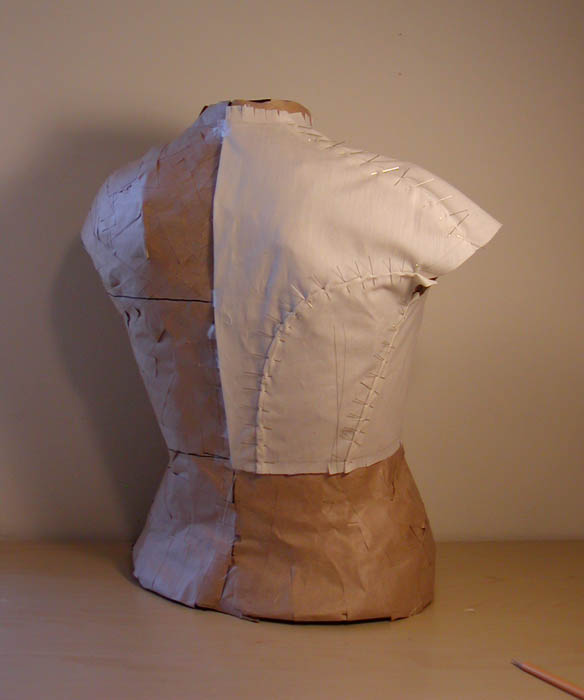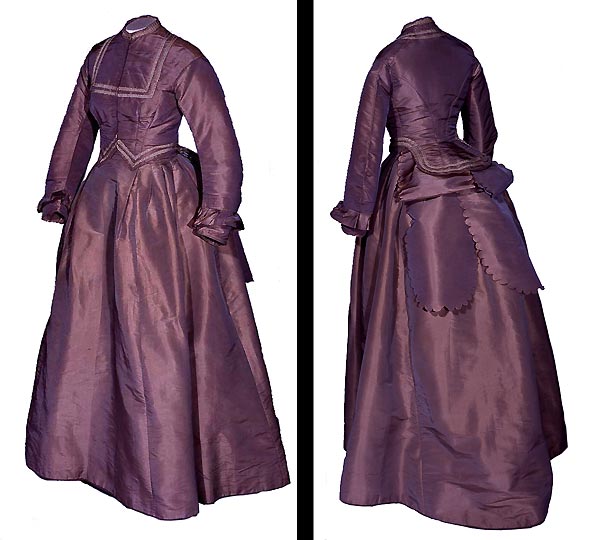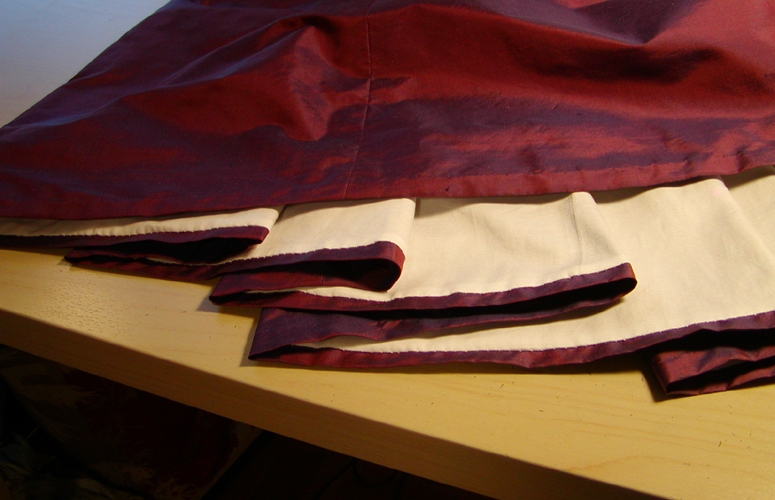
September 2007 – February 2008
This late 1860s day dress is made in a purple shot silk shantung. The purple is actually an optical blend of the electric blue weft and orange warp. Silk satin was cut in bias strips and sewn to the bodice as trim, the same color as the warp threads. I now have a purple and orange dress!
Originally made to wear to the Dicken’s Fair, this dress ended up far showier than I had planned. I thought that it might make a fun addition to Aaron’s new suit, for the Costume Con 26 masquerade. So with a few added touches, and a change of neckwear for Aaron (an effort to tie the costumes together), that became the new plan.
Laughing Moon’s pattern #111, “Ladies’ Early 1860s Day Dress” bodice was used as a basic block. I re-draped the center back piece to remove the pattern’s tuck, replacing it with a side-back seam. Center front was converted to a three-dart bodice. Two darts just wasn’t working for me, and I started to run out of time with all the fussing. I took my cues from an April 1840 dress in 80 Godey’s Full-Color Fashion Plates, illustrating the rare triple-dart front.


The coat sleeves were taken in, to convey the later 1860s fashion. The shoulders were left quite dropped (to the second row of trim). The dress is trimmed in a military-influenced fashion. A photo from the collection at the Musee McCord Museum served as a guide. The bodice attaches to the skirt with hooks and bars, sewn just inside the waistband. A separate matching belt goes on top.
To finish the inside I piped the neckline and armholes, and faced the cuffs. The silk was underlined with cotton sateen. There is also a full lining of sateen, and the sleeves are lined in lawn.
The foundation garments are all Laughing Moon. For the competition I wore the corset and undies, elliptic hoop and bum pad. In the outdoor photos the ensemble is worn over my single-layer dore corset, and the bell shaped hoop.
The skirt is Truly Victorian’s “1865 Elliptical Skirt”. This pattern, which is drafted for a larger elliptical hoop, actually has a nice little train when worn over the LM hoop. It would have been a lovely option to have kept the skirt trained, but in the end I wanted it to be “walking” length. A giant bow was added to the back of the skirt to emphasize the elliptical cut. The skirt is also finished with a full lining of white cotton sateen.


My own version of a “winter bonnet” was taken from the various illustrations on p.5 of Harper’s Bazar: 1867-1898. It’s wired buckram, and worn over a hairstyle that I have yet to fully master. I also made some purple and orange earrings. It took me 1 hour to pick out the stones and crystals and 15 minutes to assemble them. Sweet! I was very pleased to discover, while writing this up, a lilac 1867 dress shot with gold. Not too terribly different from my own fabric.





